Microsoft word - orthospec - faqs.doc
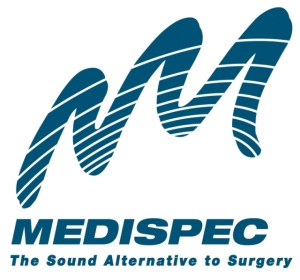
Orthospec™ ESWT
Frequently Asked Questions (FAQs)
Pre and Post Treatment
Briefly describe the procedure (i.e., shockwave delivery, length of procedure, anesthesia, physician, technician, consumables, etc)
The Orthospec™ utilizes electrohydraulic, spark gap technology. The treatment procedure is a non-invasive, outpatient procedure intended to treat chronic heel pain caused by Plantar Fasciitis. The treatment regimen calls for one 25 minute treatment session, providing a total of 3800 shocks. It is recommended that this procedure be performed by a qualified, Medispec trained, medical professional under the supervision of a physician. During the procedure, there is no anesthesia or sedation provided to the patient. Imaging is not required.
How is service to be provided for the Orthospec?
Medispec has an exclusive nationwide Agreement with GE Medical Systems to provide service on our products.
What training programs are in place for physicians?
Medispec provides a comprehensive training program conducted by Medispec Applications staff. Technicians are formally certified to administer treatments and are given certificates upon completing the training program.
20410 Observation Drive, Suite # 102, Germantown, MD 20876-6419
P: (301) 944-1575 Toll Free: (888) 663-3477 F: (301) 972-6098
e-mail: [email protected]
m www.medispec.com
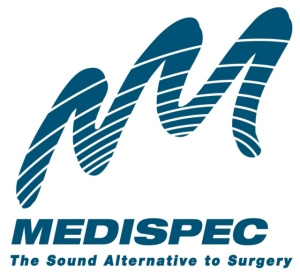
Suggested Pre and Post Treatment Regimen
Questions for Pre-Treatment:
If the patient is taking NSAIDs, how long before the treatment should they discontinue taking them?
Patients don't have to discontinue NSAIDS prior to the procedure. They can stay on them pre-and post treatment. However, it's preferred to wean them off NSAIDS 2 weeks after the treatment. NOTE: Patients who are taking medications that may prolong bleeding (such as aspirin), should consult their physician regarding temporary discontinuation.
How long before treatment and how long after treatment should patients discontinue this therapy?
Patients should discontinue meds which prolong bleeding 5-7 days prior to the procedure. They may resume these meds the following day after treatment. You can check the coagulation blood work prior to surgery if it is of any concern.
How soon can the patient resume normal activity?
Normal activity can be resumed immediately.
How soon can the patient resume strenuous activity? (i.e. running)
Strenuous activity should be delayed for approximately 2 weeks post
treatment. Especially if the patient has an increase in pain from baseline….which often happens.
Should the patient apply heat to the foot post treatment? And if so, how
Heat or Ice does not need to be applied post treatment….however the doctor can use his discretion for the application of either.
20410 Observation Drive, Suite # 102, Germantown, MD 20876-6419
P: (301) 944-1575 Toll Free: (888) 663-3477 F: (301) 972-6098
e-mail: [email protected]
m www.medispec.com

How soon after the treatment can the patient resume taking NSAIDS?
Patients may resume NSAIDS immediately post-op.
To be a candidate for ESWT, patients should have exhausted various conservative treatments prior to shock wave treatment, however, should these therapies (i.e. such as local steroid injections, orthotics, or physical therapy) be used in conjunction with ESWT?
Orthotic use should be used post-op to decrease the risk of reoccurrence. Furthermore, the patient should continue a stretching program to allow for elongation of the plantar fascia. Steroid injections aren't necessary, and should have been exhausted at this point. If the patient has increased pain, ensure them that this is part of the reparative process, and provide them
palliative care (i.e. ultrasound and strappings).
Should a physician use an analgesic or anesthetic during treatment?
Although the Medispec device obtained FDA approval without the use of
anesthetic, A Posterior Tibial Nerve block in adjunct with a sural nerve block allows for greater patient comfort. This also allows for the device to be
placed at a higher level for a greater amount of shocks….which should increase clinical efficacy.
Is there a washout period for patients on anticoagulants, such as Coumadin. If so, what is the regimen?
For patients taking anticoagulant therapy such as Coumadin, it is suggested that the patient come off the therapy 7 days prior to treatment and then can start back on the therapy immediately post treatment. An I.N.R. assessment is suggested to gauge the blood's coagulation.
What is the efficacy rate with this product? We hear 72 and 77%
20410 Observation Drive, Suite # 102, Germantown, MD 20876-6419
P: (301) 944-1575 Toll Free: (888) 663-3477 F: (301) 972-6098
e-mail: [email protected]
m www.medispec.com
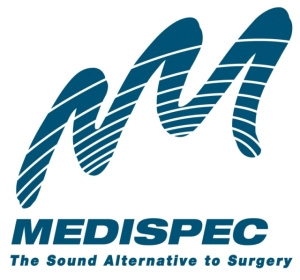
In our study of 172 treated, 72% of Orthospec patients (115 patients) showed a decrease in pain (measured by the VAS pain scale) of 3 cm or more. 86% of Orthospec patients showed a decrease of pain by 1 or more cm. At enrollment patients had to have 5 cm or more on the VAS scale. Physicians find that an improvement in pain of 2 or 3 cm is highly
Is it safe to say we used no anesthesia at all on the clinical trial patients?
During the Orthospec clinical investigation of a total of 172 treated
patients, NO sedation or any form of analgesic was used on participating subjects. None was provided before, during or after the treatment
procedure in either the active group (Orthospec) or the sham group.
What is efficacy rate for second or third treatments?
Each additional treatmet provides the same improvement rate respectively. Overseas usage of the Orthospec suggests that multiple treatments result in greater improvement in pain level.
How many treatments might a doctor give before he deems the treatment
ineffective?
According to overseas studies and current usage of the Orthospec, usually physicians do not exceed more than 4 treatments (4 separate visits). The treating physicianshould use his / her own discretion.
How long is the usual time between treatment and results?
Usual healing time is 3 weeks. We recommend patients come back
around 3 weeks after being treated to be assessed again. At this time the doctor can prescribe an additional treatment. We want to
leave this up to the physician; depending on the severity of the patients' condition and the treatment outcome. We recommend a period of roughly 3 weeks to administer another treatment. This period gives the treated area time to heal itself.
How long before a doctor re-treats?
20410 Observation Drive, Suite # 102, Germantown, MD 20876-6419
P: (301) 944-1575 Toll Free: (888) 663-3477 F: (301) 972-6098
e-mail: [email protected]
m www.medispec.com
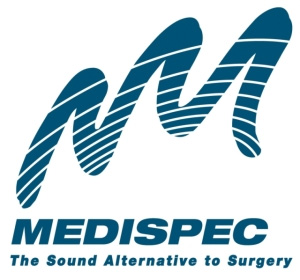
We recommend 3 weeks. Again, it is up to the physician's discretion. We don't recommend multiple treatments in one visit.
Once treated with Orthospec, will PF ever come back after 6 months, 1 year, 5 years?
The Orthospec™ provides symptomatic relief of the chronic pain caused by PPF. Plantar Fasciitis occurs when the long ligament or fascia tissue at the bottom of the foot becomes inflamed. What this treatment does is break down or injure the tissue (ligament) as to heal itself, thus reducing the pain. After awhile, the tissue can become inflamed again and the severe pain could come back. Our study looked at the effectiveness out to 3 months post treatment. 86% of patients had reduced their pain level by 1 or cm on the VAS
scale out to 3 months, therefore demonstrating that after one treatment, pain can be greatly reduced and the reduction can last out
to 3 months. In other Orthospec™ experience, pain reduction or elimination has lasted out to 4 to 6 months.
What do we risk of "missing" by not using visualization? What is the clinical importance of using imaging?
We are not risking anything not using imaging. Imaging is used to focus the shock wave (F2) onto the affected area of the foot. The reason the competitor uses an additional imaging apparatus is to
assist in the focus of their F2. With the Orthospec, our enlarged therapy zone (focal zone) eliminates the need for additional
targeting. The yellow marker or target enables the center of the shock wave to be directed to the effected area. However, because
the enlarged therapy zone disperses the energy over a wider area, this reduces the pain to the patient. The Orthospec is designed to
directly target a wider area of the affected foot without causing damage to surrounding tissues.
If the F2 s larger, but the pressure is the same, why do we not need anesthesia? Many podiatrists don't understand.
Because our therapy zone is larger, the energy is dispersed over a wider area for treatment. Because this energy is not directed to a small area (pinpoint) this reduces the pain of the patient. Thus
20410 Observation Drive, Suite # 102, Germantown, MD 20876-6419
P: (301) 944-1575 Toll Free: (888) 663-3477 F: (301) 972-6098
e-mail: [email protected]
m www.medispec.com
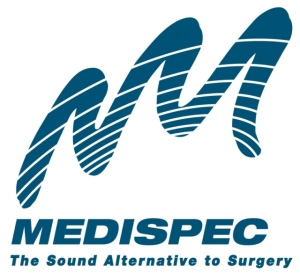

eliminates the requirement for anesthesia. This does not mean,
however, this treatment is not uncomfortable or painful. It means that it is less painful than other devices. All actively treated patients in the study were not given any type of anesthesia or analgesic and they were able to reach energy levels well over 4.
Where can we learn more about the structure of the foot?
Heidi and Leticia can provide information from various clinical websites. In addition, I can provide you with presentation materials that discuss
some foot anatomy. Below I've included a couple of diagrams for your review.
20410 Observation Drive, Suite # 102, Germantown, MD 20876-6419
P: (301) 944-1575 Toll Free: (888) 663-3477 F: (301) 972-6098
e-mail: [email protected]
m www.medispec.com
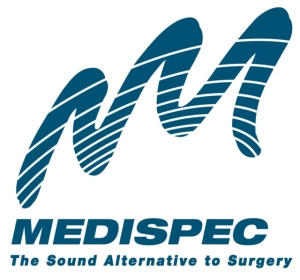
Does the doctor need to be in the room or just on the premises?
We recommend the procedure be carried out by qualified trained medical personnel under a physician's supervision. The procedure should be supervised by the physician, whether in the room or on the premises.
When are we hearing the Medicare code will be out, some are saying this
summer?
As far as we know, the permanent code should be out by January 2006. We will look into this further and let you know the current status.
20410 Observation Drive, Suite # 102, Germantown, MD 20876-6419
P: (301) 944-1575 Toll Free: (888) 663-3477 F: (301) 972-6098
e-mail: [email protected]
m www.medispec.com
If we cannot "rent" an ESWL to a physician, how can we do it with ESWT
once Medicare approves?
Please discuss this with your managers.
Why/how is our larger therapy zone "better" than the Epos or Ossatron?
Since our therapy zone is larger than the other devices, it allows the reduction of pain during treatment. The main benefit is to patients who are more able to tolerate higher energy levels without sedation. And for the physicians, this eliminates the need for additional imaging and the extra cost for anesthesiologist.
How many patients experience long term relief of pain from one
treatment?
The Orthospec™ reduces and in some cases temporarily subside pain for more than a one month period and even longer depending on the severity of the case. In terms of safety, we found that over a 12 month period patients experienced 0 adverse events, therefore treatment is deemed safe over a long period of time.
20410 Observation Drive, Suite # 102, Germantown, MD 20876-6419
P: (301) 944-1575 Toll Free: (888) 663-3477 F: (301) 972-6098
e-mail: [email protected]
m www.medispec.com
Source: http://www.annapolisfootandankle.net/docs/OrthospecFAQs.pdf
Provision and practice of specialist pretermlabour clinics: a UK survey of practice AN Sharp, Z Alfirevic Department of Women and Children's Health Research, University Department, Liverpool Women's Hospital, Liverpool, UKCorrespondence: Dr AN Sharp, Department of Women's and Children's Health Research, Liverpool Women's Hospital, Crown Street,Liverpool L8 7SS, UK. Email [email protected]
Persian Literary Studies Journal (PLSJ) Vol. 2, Nos. 2-3, 2013 On the Flying Carpet of Orientalism: Reading Anita Amirrezvani's The Blood of Flowers Seyed Mohammad Marandi Associate Professor of English Ph.D. Candidate Literature English Literature University of Tehran, Iran








